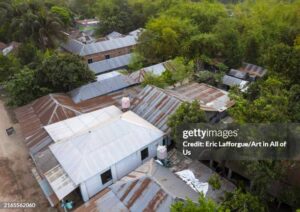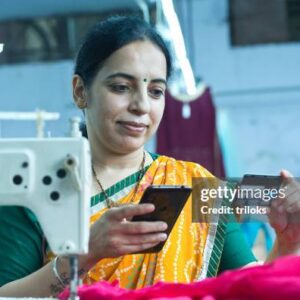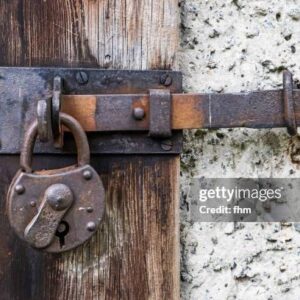
Although, there is no fixed law about, from which certain day or date a story should be started to get narrated. But in context to or relativity to some note worthy incidence, the lead character of the story needed to be described with its own peculiarities. The beginning of the story should be counted from that point. On the same, when the incidence describing the salient features of the main character in near future takes a U-turn in an inconsistent way, then the first initiative incidence should be considered as the opening chapter of the story.
The beginning time of this story is round about the year of 1978- 79. At that period of time I was a college going student. Prior to that period, in social Indian system and specifically in Hindu society, in the era of 1960-70, when people of my generation and next generation were born, there prevailed no concept of “family planning” as such. Truly say, in our country side, people hardly knew about contraceptive devices during 1960 -70 to control the birth of children. In such ambiance, when sex was the main and only ultimate means of enjoyment, it was natural, every family had ample numbers of children as family member. This was helpful to encourage the concept of “joint family” as well.
When a society been destined to possess a good deal of children to sustain for many generations, then the concept of “large family” in shape of kinfolk was but to be extant. Such chain of relationship were to be existent on paternal side as well as on maternal side. For paradigm, on the paternal side chacha ( in vernacular uncle by being younger, real or cousin brother of father.) Like wise Tau was also uncle being elder real or cousin brother of father. The sister of father, be it real or cousin in first, second or third line were Bua ji or aunt in vernacular. In the same pattern, husband of Bua ji being fufa ji or uncle. In the same series, Mother’s brother ( real or cousin of first,second and third lines were Mama or maternal uncle.) The wife of maternal uncle and sister of mother in any line were maternal aunt.
These relations were maintained generation after generation and in some cases, even distant relationship in family tree too were maintained wholeheartedly. Otherwise also, our Indian Hindu society from its inception been a closely knitted society. In this type of social system, occasions of birth and death, matrimonial ceremony and other kinds of family function congregation were celebrated by inviting all these members of clan. apart from that, friend circle and neighbors too ever been an inseparable part of such gathering in almost all cases. The presence and participation of clan members were expected as mandatory in such kind of function.
On the contrast, as on today, the concept of “nuclear family” and birth control is on rise. The old culture of “mixing of kinfolk” has come to extinction and surfacing up as a bad omen of decaying process of socially knitted Hindu society. Here, I gave this detail to let reader know, how relation and cordiality were maintained in that old era and it were observed generation after generation. In the same ambiance of old era of cordiality and relationship, my mother had had a cousin brother, named Aatma Ram ji. As far as, if I talk about the family tree from the mother side, he was the first cousin brother by being son of maternal uncle (Mama ji) of mother. And if I talk of my status of relationship with him , his being cousin brother of my mother, he became my Mama ji (maternal uncle) either.
He was in government job, as a teacher in the basic primary education board of the District school. Whole through in his life, he remained posted at some hill side location, that was hard to access. Though as per rules and regulation of that time, such teachers were destined to remain posted in the home district only and it ever proved helpful to him in certain way. Need not to say, my this maternal uncle and our family stayed in the same foot hill district. The distance between his native village abode from our country side locality was about thirty km. At that period of time, when means of public transportation were scarce and bicycle was instrumental in covering the distance; this distance was measurably a long distance.
Though the posting place of Aatma ram Mama ji was about 90 km away from his native place, but he had had a strong attachment to his family. This strong bonding ever prompted him to reach back his native village on every week end. Otherwise also, that was an old fashioned era and at that time in schools the trend of “holiday” on every festival was in liberal mode. Today, on the Dushera festival ( when Hindus burn the effigy of Ravana), education council hardly grants one day”holiday.” But at that period of time, ten days long “holiday vacation” were granted, followed by one week holiday vacation of Deepavali ( festival of light.) Likewise other main festivals were loaded with holiday. Apart from that, two weeks “winter vacation” and two months long ” annual summer vacation” was extra bonanza for students and teachers both. A person working in the capacity of a teacher was never short of “vacation” and never felt “amiss” from home.
This facility of “holiday’ was so helpful for Aatma Ram mama ji to look after his agricultural venture back into his native village. As I told, he was cousin brother to my mother and in real sense his family was “maternal grandmother house” of my mother. This made my mother to visit his native place occasionally and mandatory on the incidences of birth, death and marriage and other family ceremonies and she too were invited accordingly as well. Whenever mother planned to visit there, in all probabilities I was to accompany her there.
My intermittent visits with mother made me acclimatize with the family of mama ji. It was not that he was the only cousin brother of mother. Aatama Ram mama ji too had had other brothers and cousin brothers in the same vicinity who dwelt there in shape of cluster of houses. But mother preferred to stay with the family of Aatma Ram Mama ji. This cluster of houses of the one “ancestral family” in the village was notified as “Brahman Tola ( colony.) Though, Aatma Ram mama ji was not the senior most member in his ancestral clan there in lineage of brothers, but he had earned an “extra- reputation” with in his clan as well as in the entire surroundings.
This “dignified position” was backed by some facts. Firstly, he was a government employed teacher. Secondly, he had actively participated in the “Freedom fighting movement” under the aegis of Indian National Congress party and been jailed for one year in the British regime. This had earned him a certification in the government record as a “Freedom Fighter.” By virtue of that he received a “perk’ as a “pension” for that on monthly basis. Since his being a member of Indian National Congress Party, he was a dedicated disciple of Mahatma Gandhi. He was known as Pakka Gandhivadi ( in vernacular staunch Gandhian follower,) in and around the surrounding villages.
Whole through his life he ever wore Khadi cloth in shape of Indian Dhoti or pajama and shirt. Beside, he was inclined to spread the Gandhian ideology in day to day life practice. To propagate the Gandhian ideology he had coined some “devotional songs” based on the same ideology; along with he too sung the popular devotional songs of Mahatma Gandhi. For the purpose, he bought the musical instrument of Indian harmonium and a pair of tabor (tabla,) so he could chant those devotional songs with a musical effect. That was the time when in the entire village, hardly one or two family owned dholak ( two headed drum) to play on the auspicious occasions of rituals of birth and marriage ceremony, he had had advanced category of musical instrument at his house. ( End of the part 1, cont’d). Penned by — Vinay Pharasi —–


